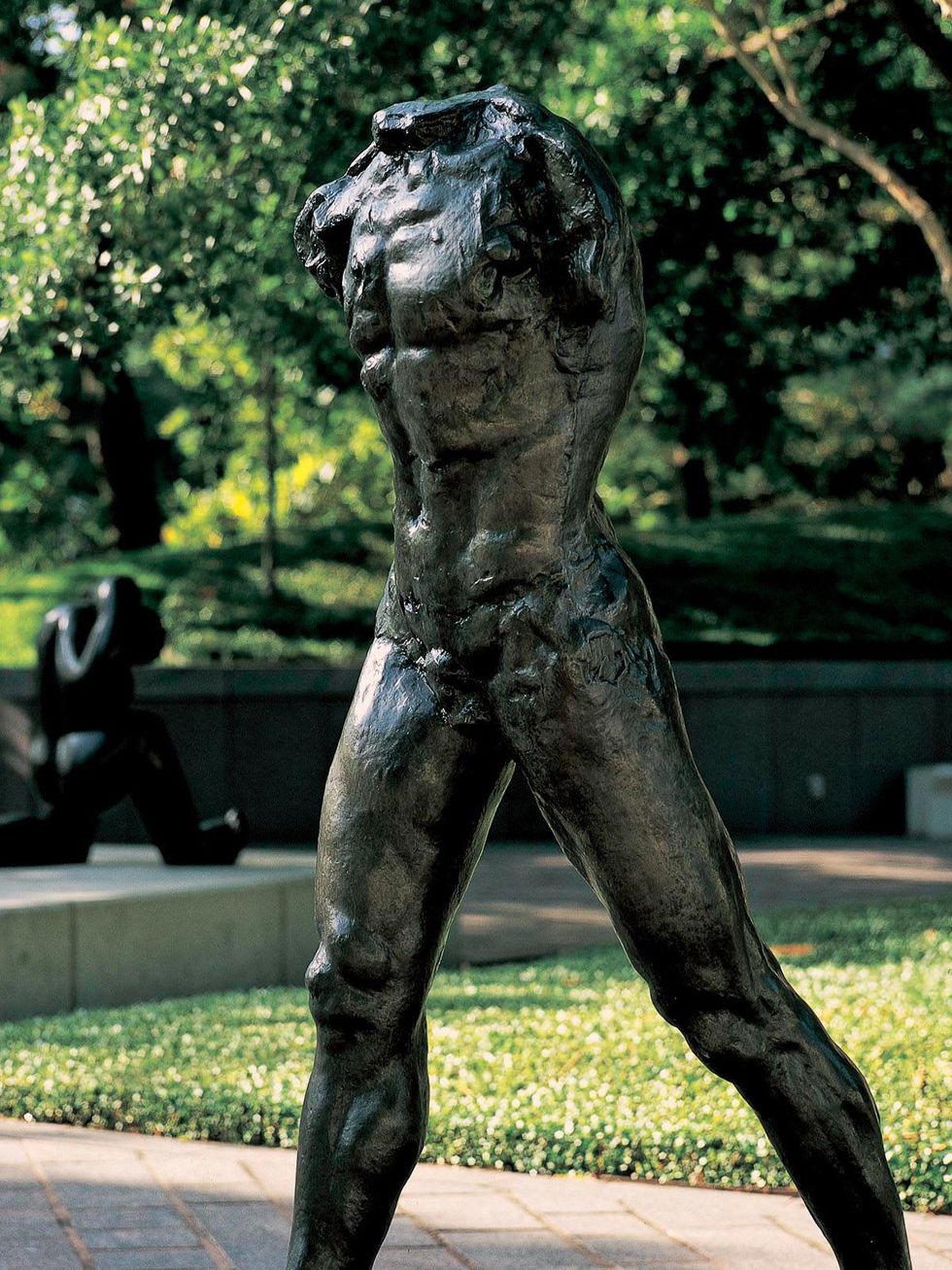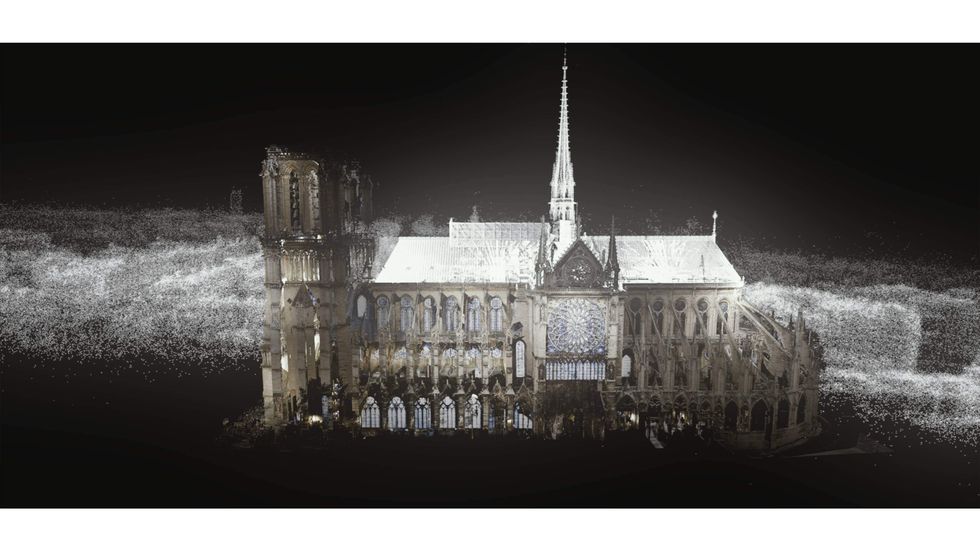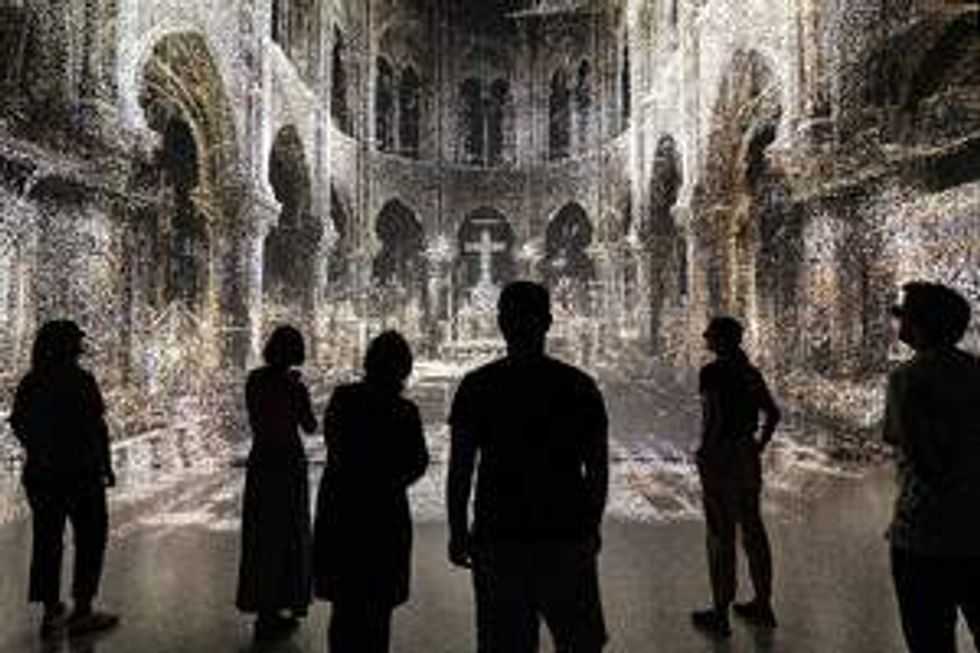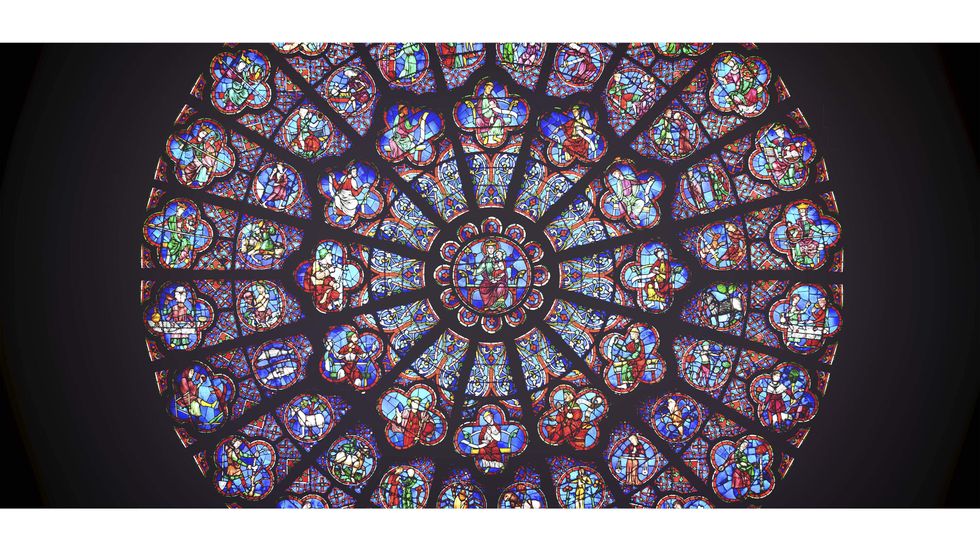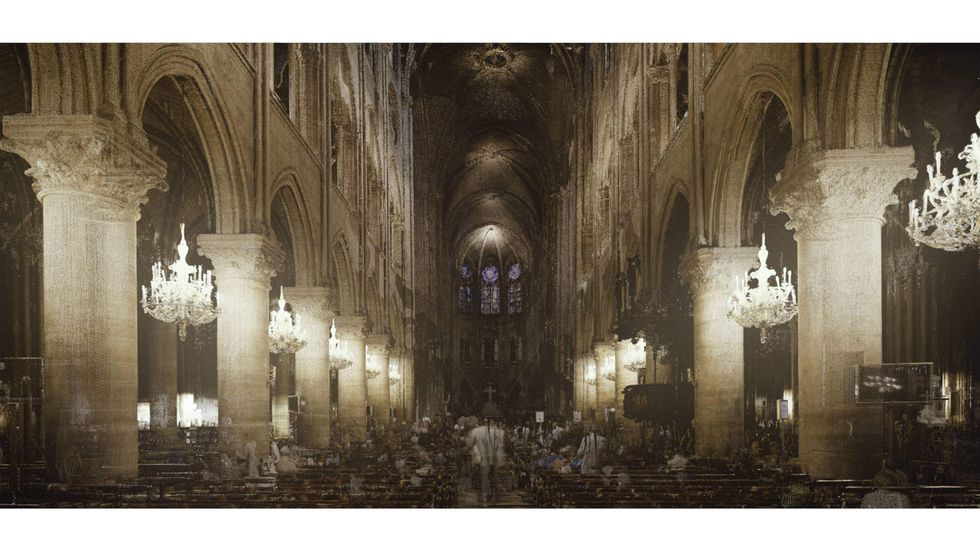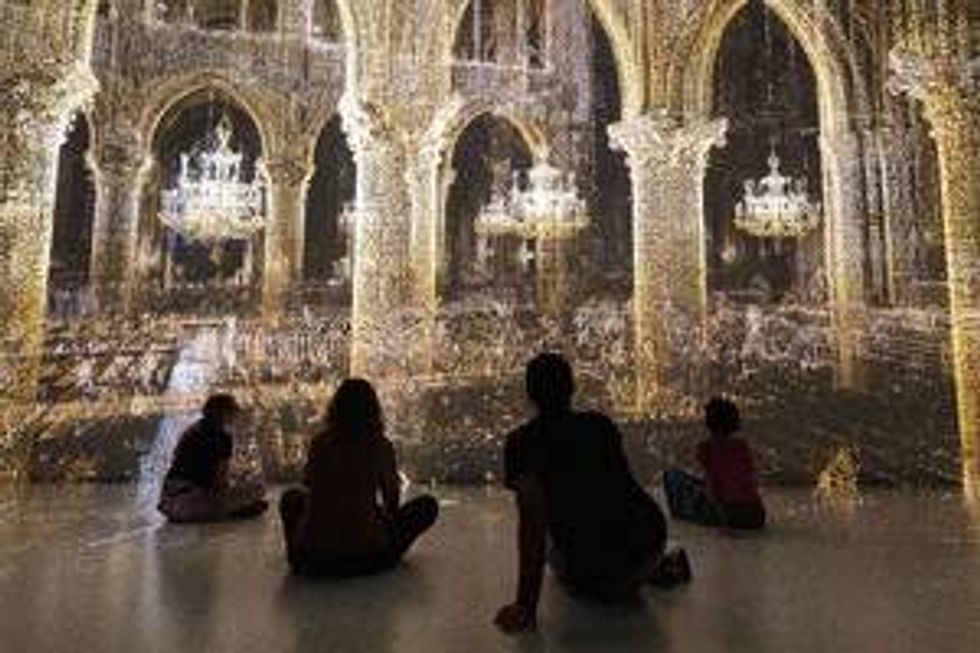Rodin Mania in H-Town
New buff sculptures shake up the Houston art scene and create a Paris-like vision: It's Rodin mania!
“The Walking Man” — that muscular marvel of a man sculpted by Auguste Rodin — has new competition for attention as the handsome centerpiece of the Cullen Sculpture Garden at the Museum of Fine Arts, Houston.
Like surprise presents, two more Rodins suddenly appeared in recent weeks, enhancing the symmetrical beauty of Houston’s own little piece of Paris, which is famous for its public sculpture gardens and monuments.
Each of the two newly installed bronze figures shows the signature grace, authoritative power and fluid agility of the works created by the great French sculptor, who lived from 1840 to 1917 and left a bountiful legacy.
The first of the duo to quietly enter the exquisitely landscaped Sculpture Garden was an oversized bronze goddess named “Cybele.” Voluptuous Cybele cleverly claimed an excellent vantage point from which to display her charms, seated within close range of the macho Walking Man.
Taken together, the three Rodins all look ultra-fit and bursting with good health. Besides feeling a sense of admiration for their beauty, I felt compelled to bump up my workout routine.
The second to appear, a slender youth, resembles a ballet dancer or gymnast leaning sideways from his elevated perch in a precarious pose. “La genie du repos eternal (Spirit of Eternal Repose)” presents a pleasant contrast to his neighbor, William Tucker’s giant bronze “Gymnast II” (1982), whose doubled-over form bows respectfully to guests at the garden entry.
Both Rodins were modeled at the end of the 19th century, and both are accompanied by plaques stating that they were lent by Iris Cantor. As in every first encounter, the questions arise: Who are these newcomers, how did they get here, and what do they have to say for themselves?
MFAH Director Gary Tinterow explains in a statement: “B. Gerald Cantor was a generous friend to Houston. In 1968, he gave two great Rodin sculptures to the Museum, Crouching Woman No. 5 (1882) and Flying Figure No. 1 (1890), and both are on display in our European galleries in the Beck Building.
“Upholding Cantor’s original vision, his wife Iris Cantor and the Cantor Foundation have worked with institutions across the world to bring the work of Auguste Rodin to an ever wider public, and we are fortunate indeed to have both Cybele (1890/1904) and Spirit of Eternal Repose (1898-1899) on long-term loan; placed in the Lillie and Hugh Roy Cullen Garden, these marvelous sculptures can be seen with Rodin’s towering Walking Man (1905) from our collection.
“No artist did more to break sculptural conventions at the turn of the last century, and these great loans allow us to measure Rodin’s career afresh.”
Alison de Lima Greene, MFAH curator of contemporary art and special projects, told me the two sculptures came from Mrs. Cantor’s collection. Her largesse in making the generous offer of the loan grew out of her longstanding friendship with Tinterow and her awareness of his devotion to 19th-century art, and how Rodin did so much to shape its course, Greene explained. Tinterow, who assumed the post of MFAH director in early 2012, previously served as the Engelhard Chairman of the Department of Nineteenth Century, Modern and Contemporary Art at the Metropolitan Museum of Art in New York.
They all have something well worth saying, and they’ll be saying it long after we disappear from the scene.
Greene said she worked together with Tinterow to determine where the two Rodins should be placed in the Sculpture Garden, using photographic cutouts of the sculptures. The two museum officials experimented with different scenarios.
The first involved grouping the goddess Cybele and the eternally youthful Spirit together with the Walking Man to create a little Rodin gallery. Then Greene conceived of placing the two figures in different locations within a communicable distance from the existing Rodin, as if they were speaking to one another across the garden in “an expanded dialogue.” That worked perfectly, as the results illustrate.
Taken together, the three Rodins all look ultra-fit and bursting with good health. Besides feeling a sense of admiration for their beauty, I felt compelled to bump up my workout routine a bit. (Merci, Monsieur Auguste!)
The Rodins and their compatriots in the Sculpture Garden communicate different messages to each of us in the same way as all the public sculptures in Paris, such as the 1844 Fontaine Moliere, which stands as an inspiring reminder of the creative contributions of the great French playwright. The primary message communicated to me through the ages is the appeal of each sculpture to our higher nature. They all represent some timeless ideal.
In the midst of our contemporary lives — in the middle of traffic in Paris, in the case of the Moliere monument — they all ask us the question: What are you doing to make the world a better place?
It’s wonderful that, thanks to the largesse of others, we can all freely admire the beautiful sculptures in the elegant MFAH Sculpture Garden, which is open to the public at no charge. For me, the most fun is to be found in the search to crack the code of what each of them is saying to each of us.
After all, they all have something well worth saying, and they’ll be saying it long after we disappear from the scene. That's a conversation well worth having, while we can.


